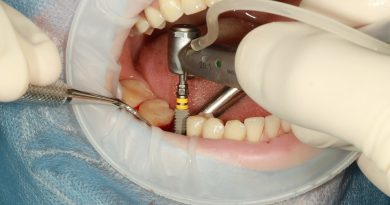A Thorough Comparison Between Invisalign Braces and Traditional Braces
Are you stuck in the middle trying to decide between Invisalign braces and traditional braces?
Making up your mind on what dental procedure to finance and have done can be a difficult task, especially with a lack of information regarding the said procedures. This post aims to put your questions to rest and lay a roadmap to your preferred braces.
Contents
The Discomfort Difference
Wearing braces brings some level of irritation and discomfort. Since braces directly apply pressure (a pull or a push) on to the teeth in order to align them, the patient may face some level of discomfort, including headaches and tooth pain. Wire braces initially cause irritation to the insides of the mouth as the patient adjusts to having them.
Invisalign braces, on the other hand, are modeled and printed in a manner fashioned after the patient’s dental impression. This eliminates irritation and applies pressure on specific teeth causing less discomfort compared to traditional braces.
Diagnosis
Orthodontists will resort to performing different procedures and treatments depending on the severity of a dental problem. For instance, in misaligned teeth, one patient may have a severe underbite while another has a mild underbite.
Traditional braces have always had the ability to correct the more severe of these cases, and orthodontists have always prescribed this treatment.
However, what about patients with mild cases? Should they also be subjected to discomfort and jaw pain? Mild cases shouldn’t be treated similarly since Invisalign braces are more effective in these cases. The printed aligners are perfect for mild misalignments and slightly crooked teeth and with less discomfort at that.
The Technology
Anytime a patient visits a dental clinic of his/her choosing a dentist will give a diagnosis depending on his/her observation. Traditionally, the dentist will rely on pictures of your face, dental impressions, X-rays and a clinical exam he/she performs, in order to prescribe the best type of braces.
However, this is not the case with Invisalign. Braces are printed from 3D models using accurate software scans. In this manner, the dentist’s prescription is backed up by reliable software and accurate data, not just simply left to the practitioner’s judgment.
Treatment Costs
With infinitely soaring medical bills, patients are being more cautious about what procedures to undergo during treatment. This is especially true if a cheaper and just as effective alternative exists. “Invisible” braces are a more expensive option due to the number of diagnostic fees incurred during digital software scans, the amount of capital used in training dentists on how to use the proprietary software, and the cost of materials used to print the aligners themselves.
Traditional braces are however still made of metal or even ceramic and use no specialized techniques, resulting in a more affordable price tag. This is however still controversial as part of these costs may be covered by an Individual’s health/dental insurance, making Invisalign braces just as affordable as traditional braces.
“Check-up Appointments”
Routine checkups are an integral part of treatment. Your dentist will need to know how effective the treatment is and how well you are coping with it. This is why whenever you’re choosing a dentist, you are biased toward dental clinics that seem more concerned and personal. However, these trips and sessions are not free. You have to cater for the transport and the consultation fee.
Invisalign braces require to be changed every two to four weeks or so, resulting in the procedure eating into your time as well as an extra cost on gas and consultation. Traditional braces, however, do not require constant checkups and adjustments; on average, you’ll visit the orthodontist about every four weeks.
Oral Hygiene
Maintaining good hygiene practices is important in order to avert other illnesses and accumulation of plaque during treatment. Traditional braces are hard to clean and need a soft, round-bristle toothbrush or even in some cases an interproximal brush (in case of gapped teeth). The patient is then required to carefully and procedurally brush their teeth. This is an arduous task compared to printed braces which can be taken out and cleaned separately. Meanwhile, the patient can brush and clean their teeth as per their normal routine.
When you are considering which orthodontic treatment you’d like to undergo, keep these points in mind. Only you—and your dentist—can decide the best treatment for your needs and budge.
Author Bio: Dr. Holly Gregory owns the Humble, TX dental practice Houston Dental Implants Family Dentistry, Oral Surgery and Periodontics. The native Texan loves practicing dentistry and can’t imagine doing anything else.





